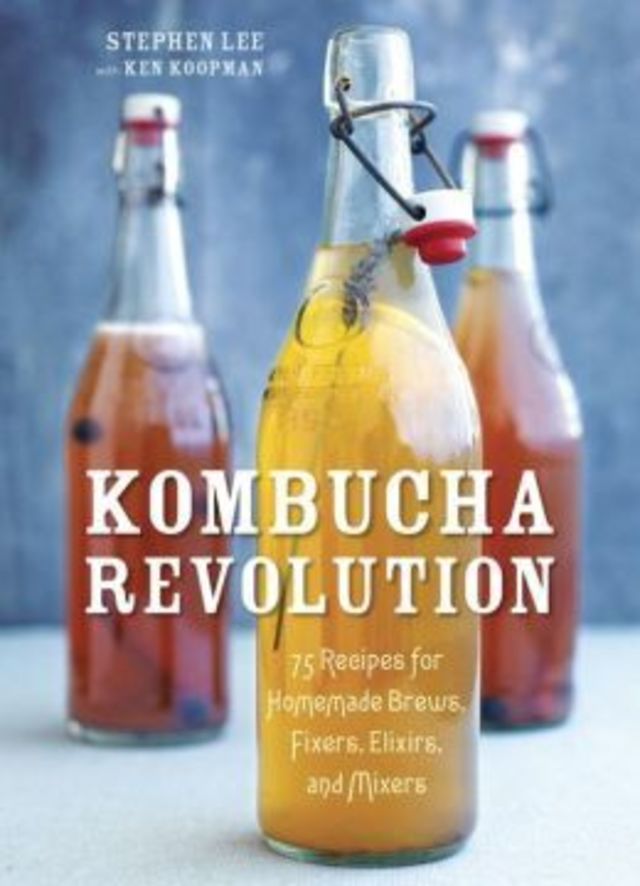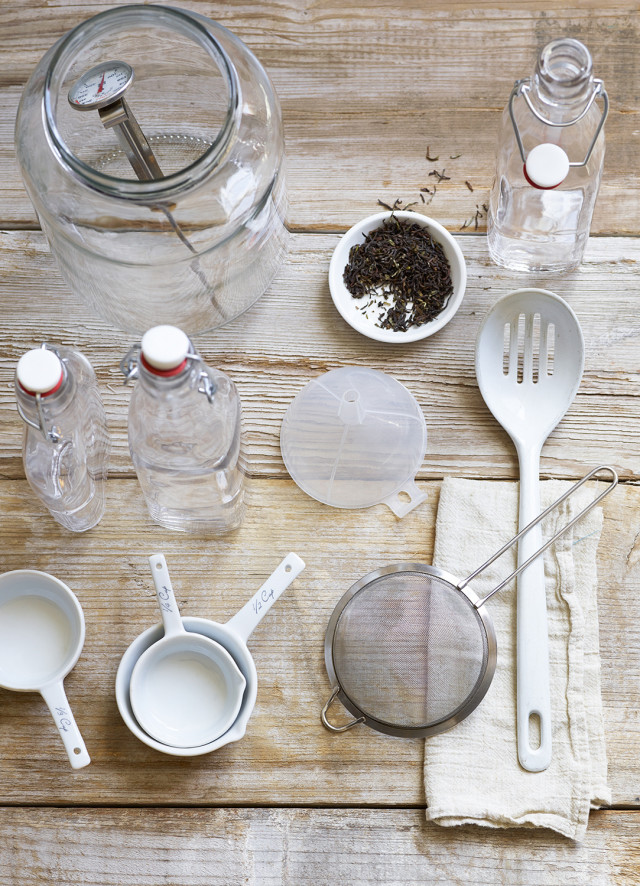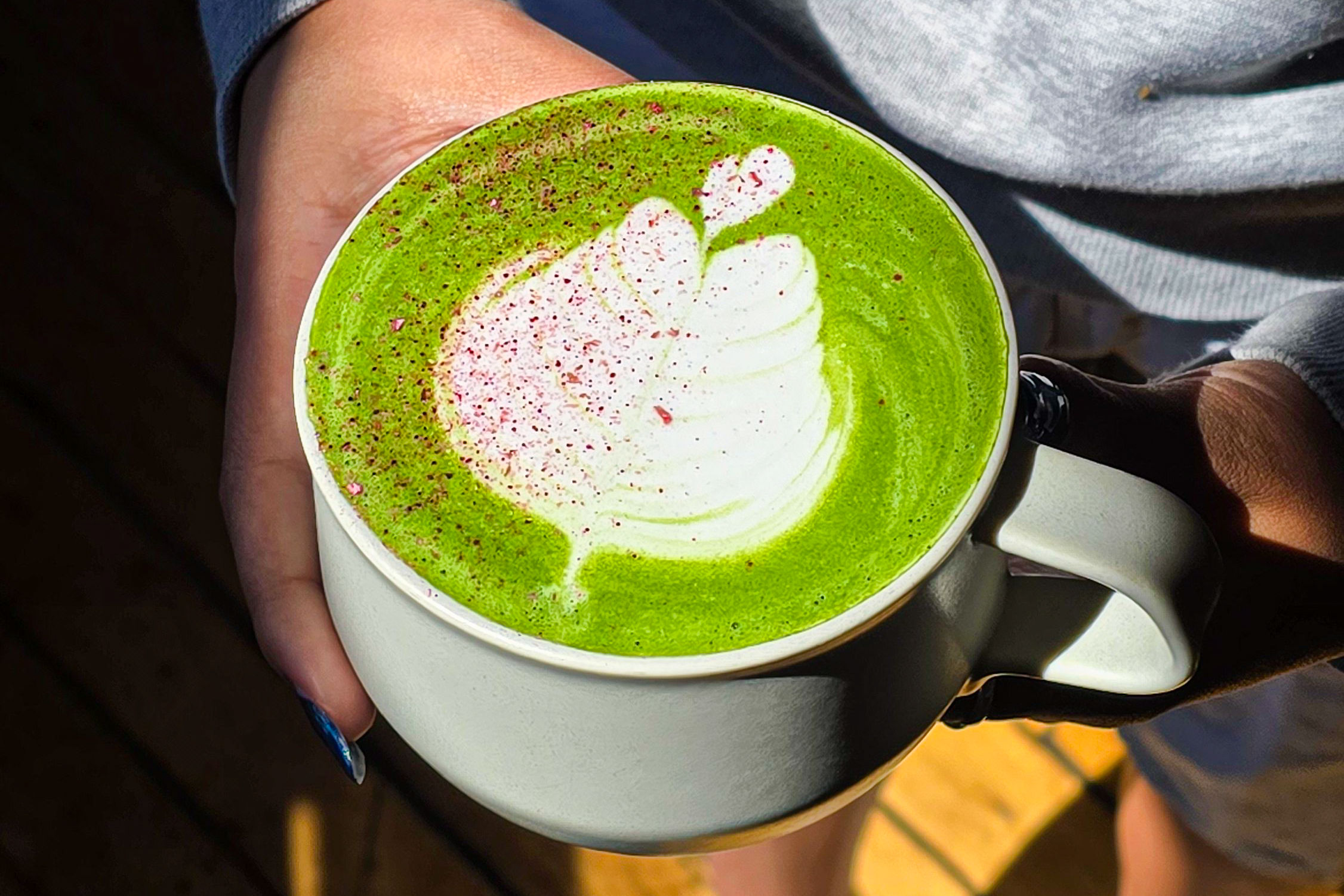Behind the Scenes of the Kombucha Revolution

Image: Courtesy Ten Speed Press
They're everywhere. Bottles of fizzy, fermented liquids are popping up left and right, promising to heal everything from indigestion to arthritis...for a hefty retail price. But what the savviest kombucha fans know is that the probiotic-packed favorite is easy-peasy to make at home, if you've got a good guide.
Enter Stephen Lee, the Portland-based tea tycoon behind Stash, Tazo, and Kombucha Wonder Drink. Lee has channeled his passion for the fermented side of steeping with his new book, Kombucha Revolution: 75 Recipes for Homemade Brews, Elixirs, and Mixers—out this week from Ten Speed Press. In the small-but-mighty tome, Lee demystifies the live beverage and offers dozens of new interesting ways to incorporate “the elixir of life” into the diets of both beginners and seasoned ‘booch-imbibers.
Throughout the colorful guide, Lee’s tone oscillates between memoir and encyclopedia as he shares anecdotes of his introduction to Kombucha (while on a tea-selling trip in St. Petersburg) and lays out the fundamentals of home "hard tea" brewing:
The basics: Kombucha is a fermented drink made from combining sugar-sweetened brewed tea with a special bacteria from a starter culture referred to lovingly as the mother, or SCOBY (Symbiotic Colony of Bacteria and Yeast). The mother initiates the fermentation process and ultimately forms a mushroom-like, rubbery disk which spans the surface of the tea.

What's in Lee's home kombucha kit: The quality of a home brew comes down to the quality of the ingredients used, and as we might expect, Lee urges readers first and foremost to note the critical role played by the seemingly inconsequential choice of what tea to use, noting that black teas yield stronger brews whereas oolongs and green teas are more sympathetic to infusions. Of course, there is no kombucha without the mother, or starter culture, which can be found online or from friends if you have the right connections in the kombucha community. Lee advises that kombucha be brewed in a glass vessel, as the SCOBY tends to prefer glass and metal has the potential to leak harmful substances into the drink.
The health benefits: Kombucha is chock full of probiotics and active cultures which aid various biological processes like digestion and the fight against inflammation. Many people claim the drink helps with weight loss, detoxification, So, how much ‘booch is enough to get the benefits of the effervescent beverage? “Whether you brew your own kombucha or buy it from a store,” Lee advises, “I would recommend incorporating it into your diet by drinking 4 to 8 ounces of kombucha two times a day.”
The book isn't all Kombucha 101, however. The real fun begins with Lee's innovative recipes showcasing the myriad ways in which kombucha can be incorporated into everyday drinks and dishes in the form of smoothies, cocktails, marinades, dressings, and in unexpected ways like the probiotic catalyst of sourdough starters and fermented vegan nut spreads, the acid in ceviche, and the jiggle in jell-o!
Grab a copy of Lee's book to dive in to kitchen alchemy—and let us know if you find a way to use up all of those extra SCOBYs. They're kind of taking over...




